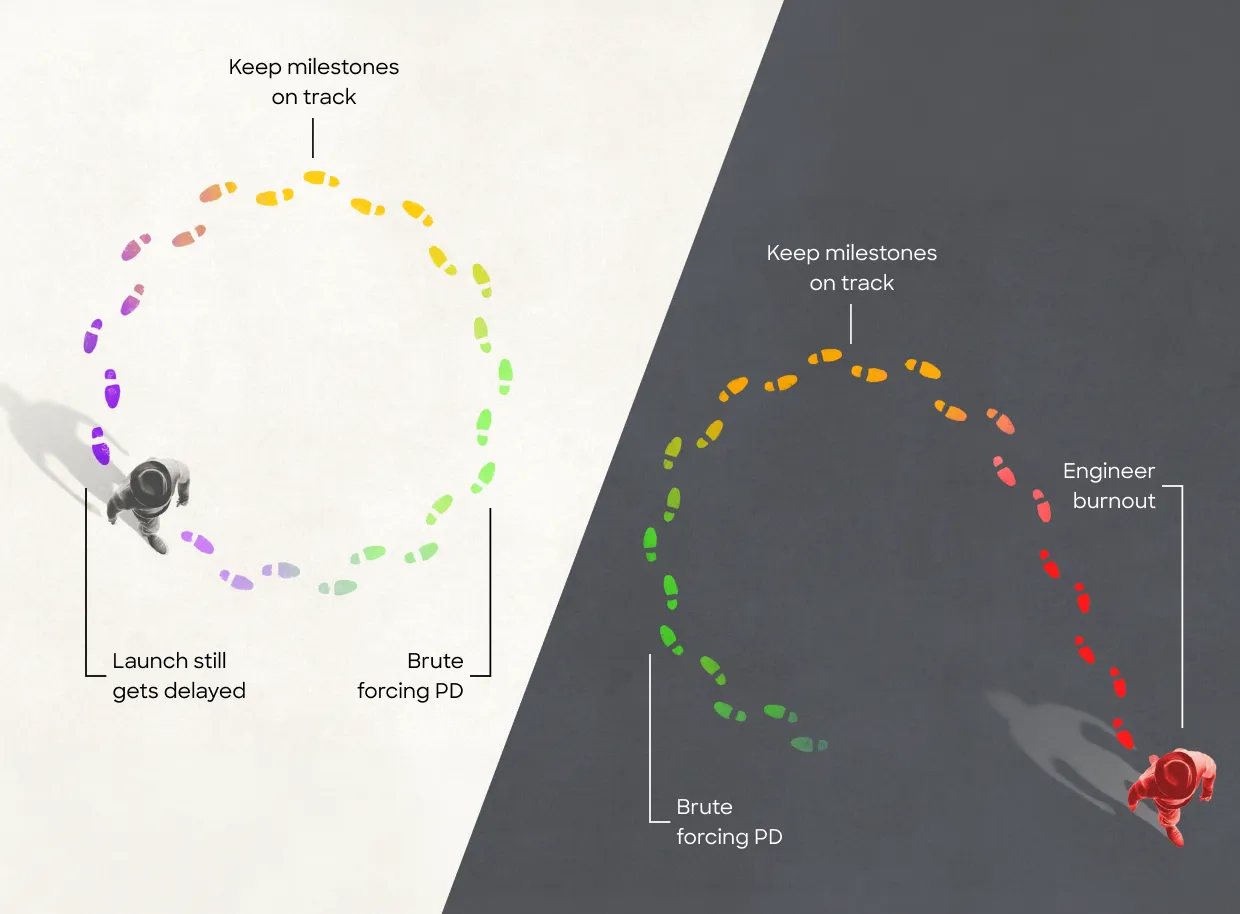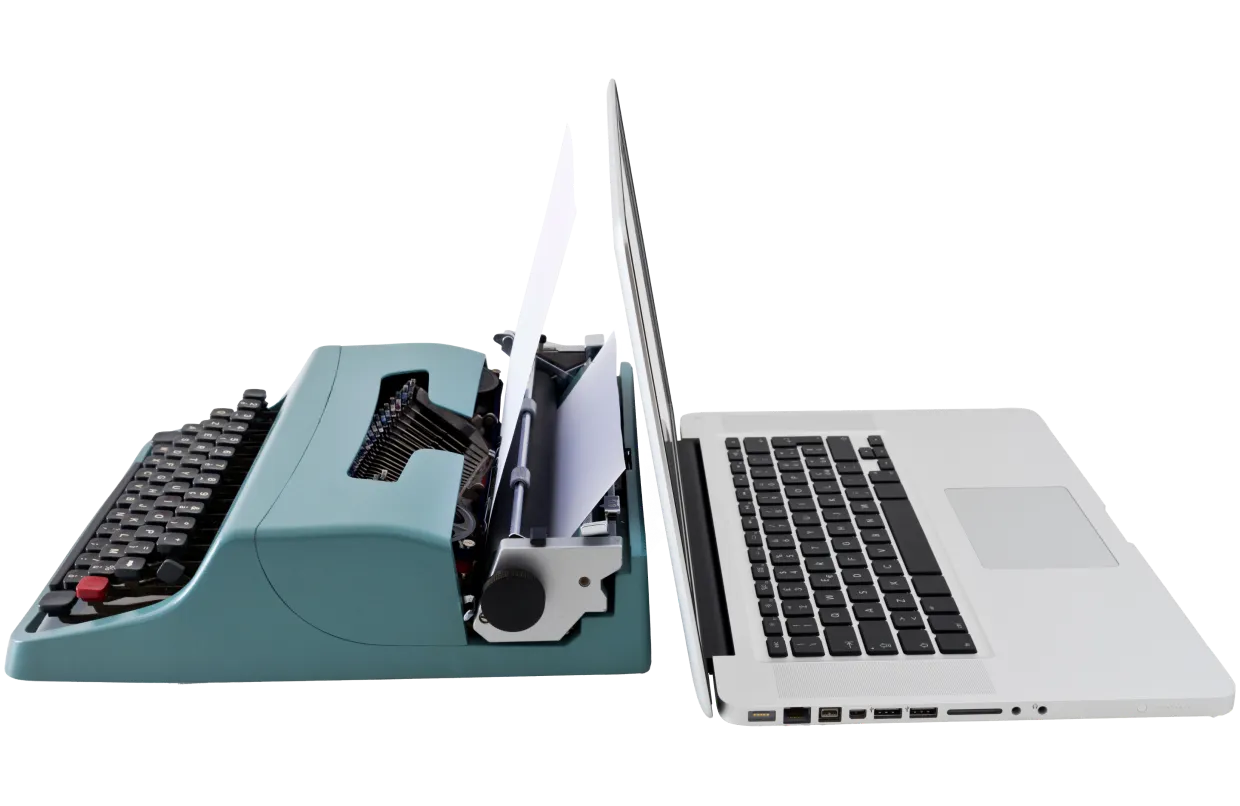Brute forcing product development doesn't work anymore
It’s no surprise. Engineers brute force product development with outdated tools and processes. But, it doesn’t have to be this way. Understanding the engineering tech gap gives teams the answers they desperately need.
GET A DEMO.webp)
The following is a true story:
Jeremy Andrews, a mechanical engineer for Tesla at the time, just arrived at his AirBnB in Yosemite when he gets a ping to his email.

It’s midnight. And now Jeremy has a choice.
- Wait until he gets back to the office to go through the 100-slide DFM deck and delay the PD process another 2 weeks.
- Respond now and keep the process moving.
Why do we brute force PD?
He spends the next few hours responding to every comment in the PowerPoint. Then, he sends it back to the supplier to keep the process moving.
This is not an uncommon scenario.
Engineers brute force product development. Because if they don’t, then they have to delay major milestones. And these milestones affect the overall product launch. Not to mention, this way of working bleeds into an engineer’s personal life – leading to frustration and burn out.
But, it doesn’t have to be this way.


What happens when we brute force PD?
According to recent research, engineering teams use many disjointed tools during product development. To no one’s surprise, these tools are: spreadsheets, PowerPoint, emails and meetings.
And the results speak for themselves:
87% of engineering teams spend multiple hours to days finding information to justify a single design decision.
Engineers spend nearly a quarter of their time on non-value add work.
And as a result, engineering leaders estimate that 43% of design feedback is never documented and therefore never addressed.
Outdated tools cause engineers to brute force PD
Let’s break this down.
Companies push engineering teams to launch products faster than ever, while still maintaining high product quality. But engineering teams use the same disconnected tools they’ve used for decades to do product development. As a result, they waste time searching for feedback that likely doesn’t exist and spend nearly a quarter of their time on non-value work.
It’s not your engineering team that’s causing product development problems. It’s the tools you’re forcing engineering teams to use.

The engineering tool gap
During product development, engineers have CAD for product design and PLM for product data and record-keeping.
But, when it comes to interacting with people during product development– nothing. Or rather, no dedicated system. This gap is especially clear during the early stages of product development: design review.
Engineering leaders recognize that design review quality is the #1 predictor of on-time delivery. And they recognize that better design reviews would prevent most late stage errors.
Yet, engineering teams still have to use outdated, disjointed tools for design review. This is what causes them to brute force product development.
And as a result:
During product development, engineers have CAD for product design and PLM for product data and record-keeping.
- Design cycles are slow
- Design errors slip through the cracks
- Late stage errors cause product development delays
- A lower quality product reaches the market
- RMAs and warranty claims slash gross margins
To avoid these risks, what engineering teams need is a purpose-built tool for bringing people together during design review.
That tool is a Design Engagement System, or DES.
The world’s best engineering teams choose a DES to solve the PD tool gap
And they choose CoLab because it’s the first DES to address the gap.
If you’re ready to see how a DES could solve your team’s product development challenges, schedule a consultation today. During the consult, we’ll:
- Discuss your product development challenges
- Decide whether a DES is the best option for your team today
- Show you how CoLab works to address the PD tool gap
